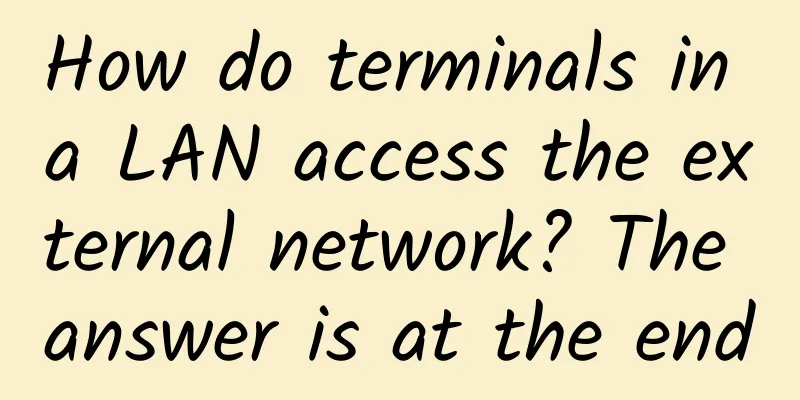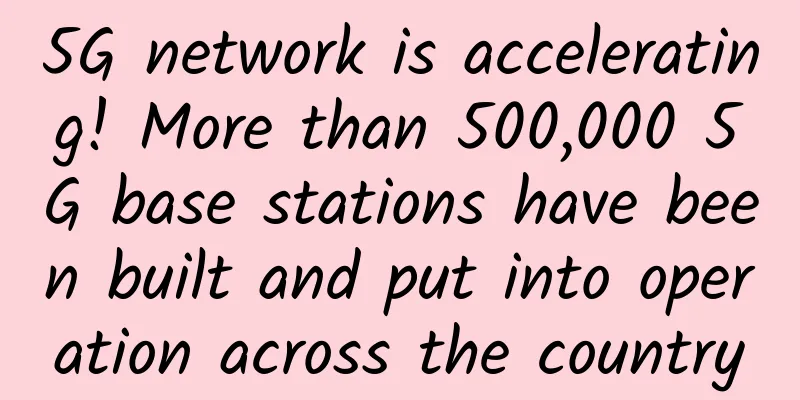The United States will cut off China's Internet in a minute? This is a popular science article certified by the Chinese Academy of Sciences

|
Currently, there are only 13 root servers in the IPv4 system, and none of them are in China. This is true; however, it is an absolute rumor that the United States can paralyze the Chinese network by cutting off the root servers. In this article produced by Science Popularization China and supervised by the Computer Network Information Center of the Chinese Academy of Sciences, a real expert explained the problem in just a few words: There is very little content stored in the root server, and ordinary users basically do not access the root server when surfing the Internet. Most of the time they only access the "recursive server" provided by the operator. Even if there is a problem with the root server, there are many simple ways to solve it, so there is no need to worry. The original text is as follows: On June 11, 2018, the resolution to abolish the "Network Neutrality Principle" passed by the United States officially came into effect. This has caused a lot of uproar. As the founding country of the Internet, the United States has powerful Internet technology, and there are more and more voices saying that "the United States is ready to cut off China's Internet at any time." This has caused many Chinese netizens to worry, after all, it is too inconvenient to be without the Internet. Can the United States really paralyze China's network in an instant? This is not the case! Faced with such a problem, we interviewed Mao Wei, director of the Beijing Engineering Research Center of Domain Name System and visiting researcher at the Computer Network Information Center of the Chinese Academy of Sciences. He said that although the United States can theoretically threaten China's Internet, netizens do not need to worry too much.
picture The United States can only "theoretically" threaten our Internet? Why? The reason why the US can cut off our network in a minute is that the root servers of the Internet are mainly in the US. The US can use the "root servers" to paralyze the Chinese network. There are even some rumors that the US has done this before, cutting off the networks of Iraq and Libya. It is said that during the Iraq War, at the instruction of the US government, the application and resolution of the Iraqi top-level domain name ".iq" was terminated, and all websites with the suffix ".iq" disappeared from the Internet. In fact, this is not the case. So what exactly are the so-called "root servers"? When Internet users surf the Internet, they need to use domain names. Domain names are like the "phone book" on the Internet. We need to find this name and then correspond it to its IP address before we can surf the Internet. Domain names are queried hierarchically, starting from the highest-level root domain name server. Mao Wei explained that the domain name system is a key infrastructure of the Internet. If the domain name system is not accessible, the entire network will be inaccessible. Some major network security incidents in recent years are related to domain names. "For example, when a hacker breaks into a unit's service website, he does not attack the website directly, but attacks the domain name server that provides domain name resolution services for the website. He paralyzes the domain name server, and the website is naturally inaccessible." Mao Wei said that the domain name root server serves the global Internet. As long as any place is connected to the Internet, we can monitor its operation. For various reasons, the number of Internet root servers has been limited to 13, from A to M. The United States has ten, and the United Kingdom, Sweden, and Japan each have one. The domain names and addresses of the 13 servers are written into the client of each domain name resolution server, which can be resolved and monitored. Schematic diagram of the working principle of the root domain name server (Image source: m.shangxueba.com) The root domain name server is an essential infrastructure for the Internet. All root servers are managed by ICANN, the Internet Domain Name and Number Assignment Agency authorized by the US government. ICANN is responsible for the management of the global Internet domain name root server, domain name system and IP addresses. The US government has a great say in its management. Global distribution of root domain name servers (video screenshot) Internet users do not access root domain name servers Mao Wei said that when netizens query domain names, they do not directly access the root domain name server, but query the domain name through the recursive domain name server (DNS domain name server set up in the local network). Recursive servers are usually set up at operators, and the records in the root server can be cached in the recursive server center, so the recursive server actually plays the role of the root server. Because there are very few records in the root domain name server, which records information on more than 1,000 top-level domain names, and less than 10 are commonly used, it is not difficult to cache them back. In addition, we can also build a mirror of the root server. Simply put, the mirror root server is a clone of the original root server. Many root server mirrors have been built in China, and there is a mirror in the Beijing Engineering Research Center of the Domain Name System. From now on, China's resolution of .cn or .com domain names will no longer be provided by foreign root servers, but by China's own mirror servers. What should we do if the United States really interrupts the root server? The rumor that "the United States cuts off China's Internet by controlling the root server" is actually impossible. The impact of this on China is mainly on international communication. "For example, foreign netizens may not be able to access some Chinese websites, but it does not affect Chinese netizens' access to Chinese websites. So if the United States wants to cut off China's Internet through the root server, China's own network will not be cut off, and netizens' access to shopping websites, video websites, chat, payment and other network applications will not be affected," said Mao Wei. In addition, Mao Wei said that if the United States really "cuts off" our network through the root server, there is no need to panic: "We will use some emergency measures to solve the emergency problem. For example, we can write the root into the recursive server, or we can build a root mirror system or emergency system ourselves, which can solve the problem." The launch of the "Snowman Project" may completely reshape the international Internet order The Snowman Project logo The "Yeti DNS Project" is a global next-generation Internet (IPv6) root server testing and operation experimental project based on a new technical architecture. It was officially released on June 23, 2015. As of November 28, 2017, the "Yeti DNS Project" has completed the installation of 25 IPv6 (Internet Protocol Version 6) root servers around the world, 4 of which are deployed in China. Global distribution of IPv6 servers: "Due to the limitation of IPv4 messages, the total number of our domain name root servers is limited. After the emergence of IPv6, this limitation is broken. In the future, we can add a few more root server addresses, so that the number of roots will not be limited to 13." my country's Internet technology needs to continue to develop Although netizens do not need to worry too much about the threat of "Internet disconnection" from the United States, as the saying goes: to cure the disease, you must treat the root cause. If we want to completely eliminate the sense of crisis and make the rumors of "Internet disconnection" not even a "theory", we still need to improve our own Internet technology. Mao Wei said that in the future China should also try to become the operator of the root server to serve global netizens and better ensure the Internet security of Chinese netizens. In fact, it is not just Internet technology, but technology in all fields in China is advancing rapidly, which of course is inseparable from every force that contributes to the progress of our society. |
<<: How to quickly troubleshoot data center networks
>>: Which unlimited package of the three major operators is more cost-effective? Detailed comparison
Recommend
RAKsmart: US CN2 line VPS monthly payment starts from $0.99, Japan/Hong Kong VPS monthly payment starts from $2.99
The day before yesterday, we shared the news of R...
Related steps of network construction and problem solving
The basic process of network construction include...
UUUVPS newly launched Los Angeles AS9929 line VPS with 15% discount, native IP monthly payment starts from 33 yuan
UUUVPS (Sanyou Cloud) has newly launched the AS99...
There have been three waves of "network withdrawal" around the world. When will domestic operators complete the withdrawal of 2/3G networks?
Recently, Ericsson released the ten-year special ...
10 ways to deal with data center outages
While data centers are designed to not fail in th...
Thoroughly understand cross-domain issues SpringBoot helps you unimpeded
Environment: SpringBoot2.7.16 1. Introduction Cro...
Saving 5G, starting with removing the pull-down 5G switch?
Recently, many users have found that the 5G signa...
The IPv6 in-depth promotion meeting was held in Beijing. Why does China want to promote IPv6 "desperately"?
Recently, the "Conference on Deepening the I...
Kunpeng Application Innovation Competition 2020. Zhejiang Division Finals is about to start, and the peak showdown is about to take place
On August 21, the Zhejiang finals will be held at...
iWebFusion: 1Gbps server starts at $49/month, 10Gbps server starts at $149/month
iWebFusion (or iWFHosting) is a foreign hosting c...
CloudCone Los Angeles SSD VPS Flash Sale $19.38/year - 1GB/30GB SSD/1TB monthly traffic
CloudCone launched the SSD VPS Flash Sale yesterd...
edgeNAT: 30% off for Korean dedicated servers, 20% off for monthly VPS in Korea/USA/Hong Kong, 30% off for annual VPS
edgeNAT is a Chinese hosting company founded in 2...
2 and a half years have passed since the first year of 5G, but users are still reluctant to upgrade to 5G
[[419264]] Recently, it is understood that even t...
How to play the NB-IoT game in 2019?
NB-IoT technology is a low-power wide area networ...
Research丨Classification characteristics and overall distribution of major scientific and technological innovation platforms in my country
As an important tool for promoting the constructi...









